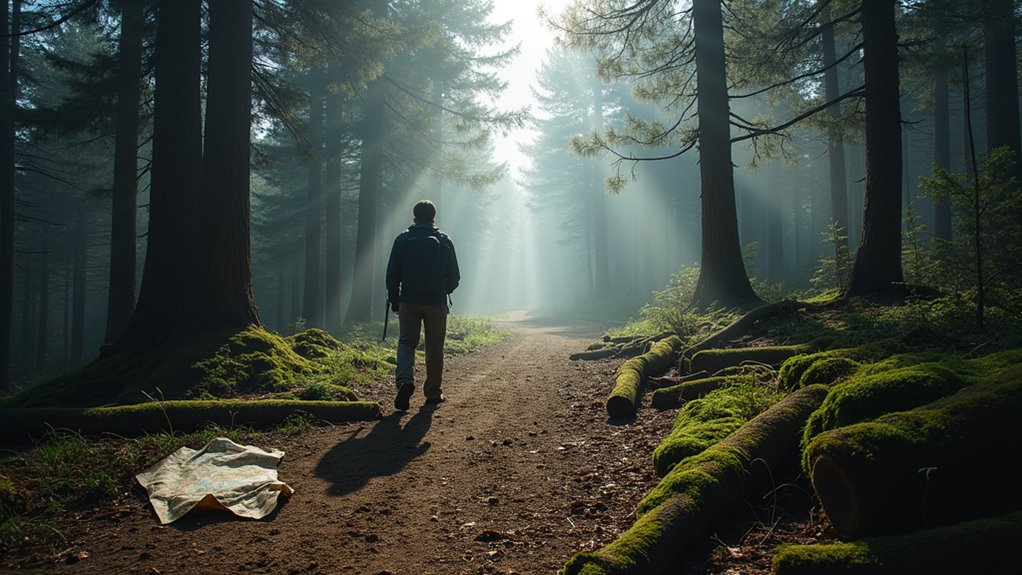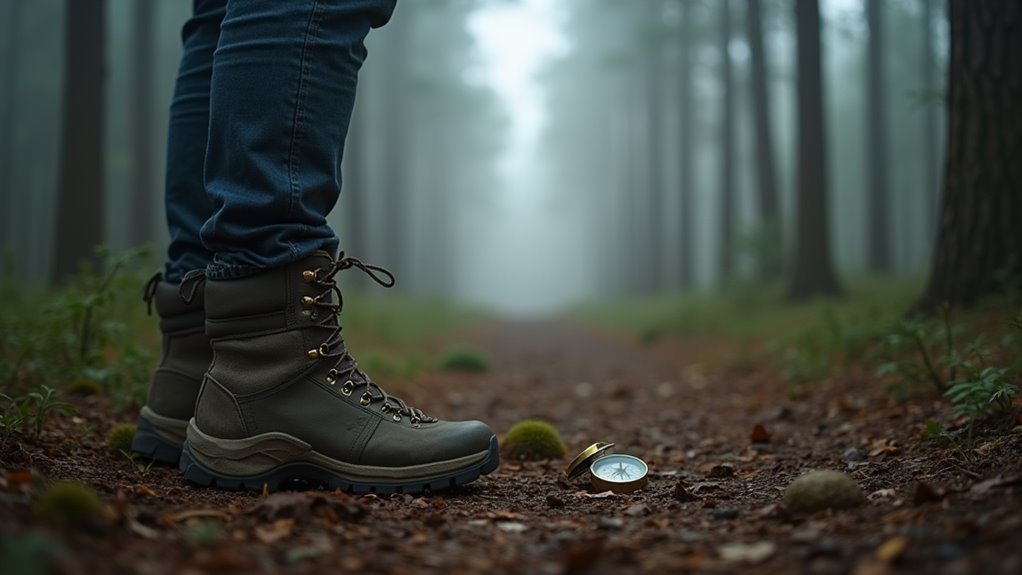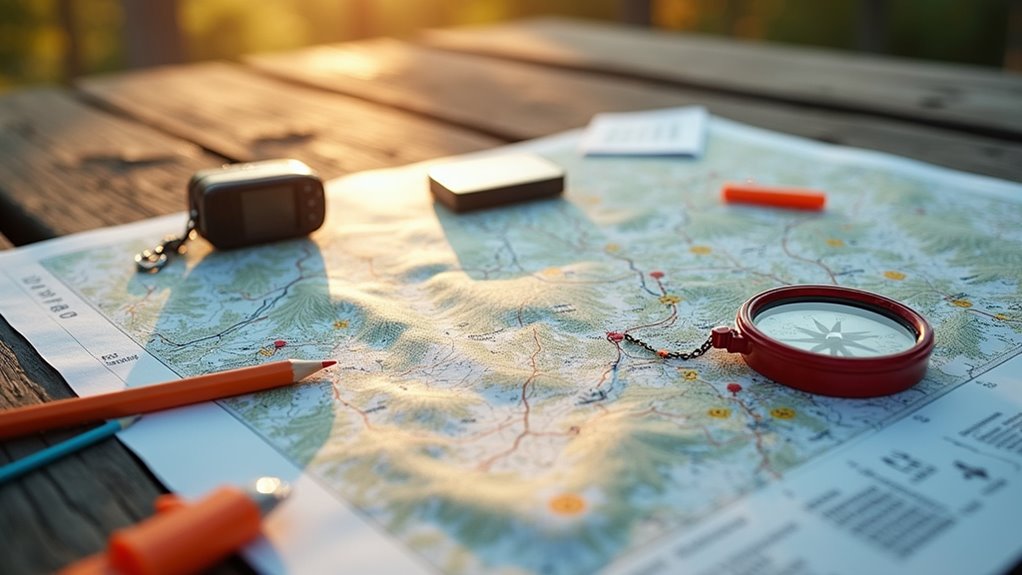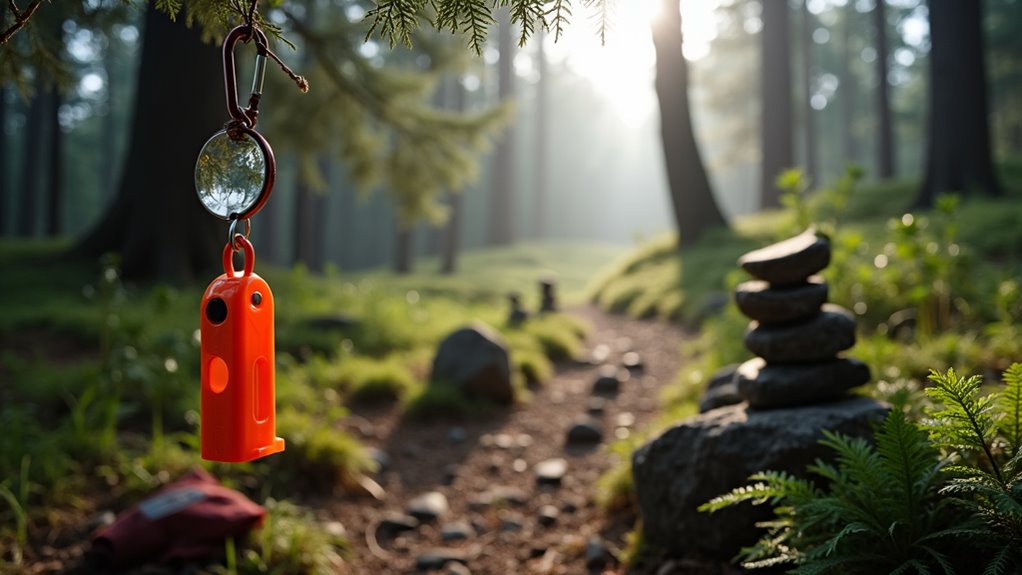Physical Address
304 North Cardinal St.
Dorchester Center, MA 02124
Physical Address
304 North Cardinal St.
Dorchester Center, MA 02124

Thousands of campers vanish in wilderness annually—don't let your dream adventure become a survival nightmare without proper preparation.
You’re excited about your upcoming camping trip, but here’s something that’ll make your stomach drop: every year, thousands of campers become lost in the wilderness, turning their dream adventure into a nightmare. It doesn’t matter if you’re an experienced hiker or weekend warrior—the woods don’t discriminate. One wrong turn, one missed trail marker, or one moment of overconfidence can leave you stranded miles from safety. The question isn’t if it could happen to you, but what you’ll do when it does.

When you’re enthusiastic to explore that promising trail or chase the perfect sunset photo, it’s surprisingly easy to wander off course without realizing it. Poor planning ranks as the top culprit—you’ll head out without studying maps or informing others about your route.
Adventure calls loudly, but proper preparation whispers—and it’s that quiet voice you should heed before stepping onto any trail.
Overconfidence in your navigation skills often leads to ignoring trail markers or taking “shortcuts” that don’t exist.
Weather changes can quickly obscure familiar landmarks and trails. You might start hiking in clear conditions, then find yourself disoriented when fog rolls in or darkness falls earlier than expected.
Following game trails instead of designated paths is another common mistake, as animal routes rarely lead back to campsites.
Finally, distractions like photography, wildlife watching, or deep conversations cause you to lose track of your surroundings completely.
Plus, inadequate water intake can impair your judgment and decision-making abilities, making you more susceptible to poor navigation choices that lead you astray from familiar paths and prevent dehydration strategies become crucial for maintaining mental clarity in the wilderness.
Since getting lost can turn a relaxing camping trip into a dangerous situation, you’ll want to pack reliable navigation tools that don’t depend on technology alone. Start with a detailed topographic map of your camping area and a quality compass – these work regardless of battery life or signal strength.
A GPS device serves as excellent backup, but don’t rely on it exclusively since batteries die and satellites can be blocked by dense forest canopy.
Pack a whistle for emergency signaling and consider bringing a small mirror for daytime rescue signals. Include waterproof matches or a reliable fire starter to create smoke signals if needed.
Finally, carry a headlamp with extra batteries rather than just a flashlight, keeping your hands free for navigation tasks during low-light conditions. Being lost in mountainous terrain like the Himalayas increases your risk of encountering wild animals, making proper navigation skills even more critical for your safety.

Before you even pack your bags, thorough preparation at home dramatically reduces your chances of losing your way in the wilderness. Study detailed topographic maps of your destination, marking key landmarks, water sources, and potential hazards. Download offline maps to your smartphone as backup since cell service isn’t guaranteed.
Research trail conditions, recent weather patterns, and seasonal changes that might affect visibility or route accessibility.
Create a detailed itinerary with specific waypoints, estimated travel times, and bailout routes. Share this plan with trusted contacts who’ll know when to call for help if you don’t return. Check local ranger stations for current trail closures or warnings.
Print physical copies of maps and directions—technology fails, but paper doesn’t need batteries or signal coverage. For winter conditions, pay special attention to ski trip preparations as snow can obscure familiar trails and create additional navigation challenges.
The moment you suspect you’ve veered off course, stop moving and resist the urge to panic or rush forward hoping to stumble back onto the right path. Take three deep breaths and sit down if possible. This prevents you from wandering further away from your intended route.
Next, pull out your map and compass or GPS device. Try to retrace your steps mentally, identifying the last landmark you remember passing. Look around for recognizable features like distinctive rock formations, streams, or trail markers that might help pinpoint your location.
If you can’t determine your position within 15 minutes, stay put. Make yourself visible by finding an open area, and begin signaling for help using a whistle, mirror, or bright clothing. Remember that proper trip planning before heading out can significantly reduce your chances of getting lost in the first place.

When you’re stranded and need rescue, your ability to create effective signals can mean the difference between a quick recovery and spending an unexpected night outdoors. Create three signals in an open area—rocks, logs, or clothing arranged in large triangles or straight lines work best. Use bright colors like orange or red that contrast with natural surroundings.
If you have a whistle, blow three sharp blasts every few minutes. Without one, shout in groups of three.
At night, use your flashlight or phone’s light to flash SOS: three short, three long, three short signals.
Build a smoky fire during daylight using green branches or damp materials.
Position yourself where aircraft can spot you easily—clearings, ridgetops, or lakeshores are ideal locations.
If you’re traveling in an RV during winter months, the challenges of getting lost become more complex due to harsh weather conditions and the additional effort required for winter camping operations.
You’ve got the roadmap to wilderness safety in your back pocket now. Don’t let overconfidence throw you off course—even experienced hikers can find themselves turned around. Pack your navigation essentials, study those maps like your life depends on it, and stick to marked trails. If you do get lost, remember: stop, stay put, and signal for help. Your preparation today keeps you from becoming tomorrow’s search-and-rescue statistic. Stay smart, stay found.